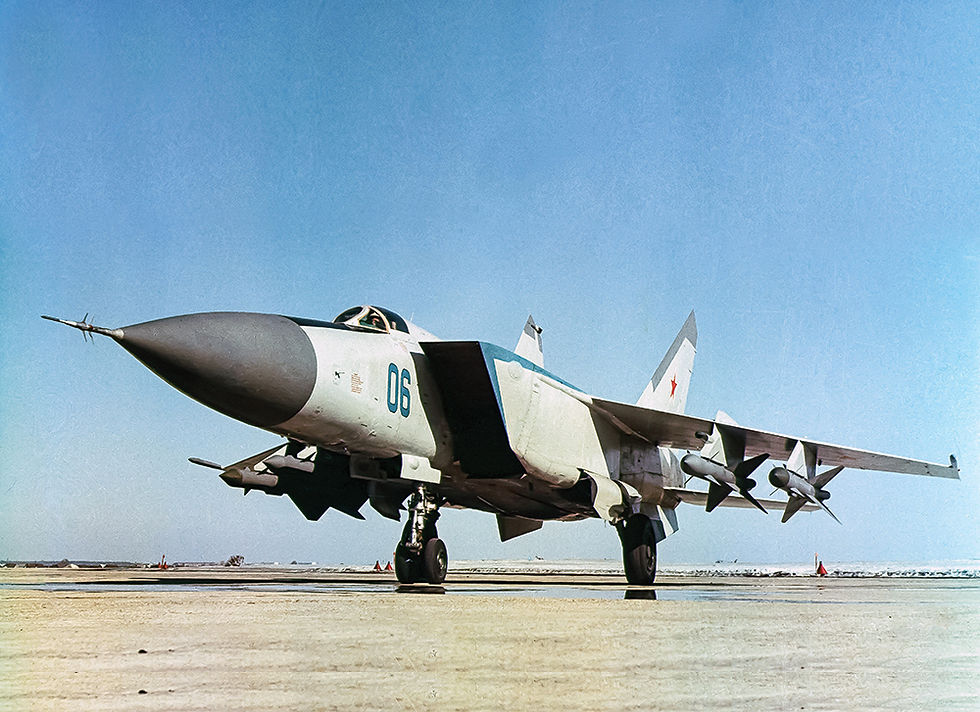The MiG-15: A History of Innovation, Combat, and Enduring Legacy
- thiliwriting
- Mar 8, 2024
- 3 min read
The year was 1946. The echoes of World War II still reverberated across the world, and the Cold War had begun to cast its long shadow. In the Soviet Union, a team of brilliant minds was gathering, united by a single, ambitious mission: designing a world-class jet fighter to counter the emerging threat of Western technology. This is the story of the MiG-15, a legendary aircraft that would redefine aerial combat and become a symbol of Soviet aviation prowess.
At the helm of this project stood Artem Mikoyan and Mikhail Gurevich, two individuals whose names would forever be intertwined with Soviet jet fighter design. Affectionately known as "MiG," the duo had already established themselves as pioneers in aircraft design during the war. Now, with the task of crafting a jet fighter looming, their minds buzzed with innovative ideas.
Their initial challenge lay in acquiring knowledge about jet engines. The Soviets had lagged behind Western nations in this technology, and obtaining captured German engines proved crucial. These engines, however, presented a significant challenge – they were powerful but bulky and unreliable.
Undeterred, Mikoyan and Gurevich, along with their team of engineers, began their work. They knew their jet needed to be agile and maneuverable, capable of outperforming anything the West could throw at them. Inspiration came from studying captured German jets like the Messerschmitt Me 262, but the Soviets aimed for more. They incorporated swept-back wings, a revolutionary design at the time, which allowed for higher speeds while maintaining stability.
Building a prototype was no easy feat. Resources were scarce, and the pressure to succeed was immense. The design team toiled day and night, constantly innovating and solving problems. They replaced the bulky German engines with domestically produced Klimov VK-1 engines, sacrificing some power for improved reliability and size. Every aspect of the aircraft, from its lightweight construction to the pressurized cockpit, was meticulously engineered for performance.
Finally, in December 1947, the first MiG-15, christened the "I-310," took to the skies. Piloted by test pilot Mikhail Ivanovich Osipov, the aircraft performed admirably, exceeding expectations in terms of speed and maneuverability. However, there were still issues. The engine remained a point of concern, and the handling characteristics needed further refinement.
Through a series of test flights and rigorous evaluations, the MiG-15 underwent numerous modifications. The engine was further improved, and the controls were fine-tuned. By 1949, the aircraft was deemed ready for mass production.
The MiG-15 entered service at a critical time. The Korean War had broken out, and the United States had deployed its own jet fighter, the F-80 Shooting Star. Initial reports suggested the F-80 enjoyed a significant advantage. However, Soviet pilots, well-trained and familiar with the MiG-15's capabilities, quickly turned the tide.
The MiG-15's agility and maneuverability proved to be its greatest asset. It could out-turn the F-80, allowing Soviet pilots to gain an upper hand in dogfights. The Korean War became a proving ground for the MiG-15, and its success solidified its reputation as a formidable combat aircraft.
Over the next few decades, the MiG-15 saw action in numerous conflicts worldwide, becoming one of the most prolific jet fighters ever built. It was constantly upgraded and improved, with various variants emerging to address specific needs. The MiG-15bis, introduced in 1952, featured an upgraded engine and improved armament, further enhancing its capabilities.
However, the MiG-15's legacy goes beyond its role in armed conflict. It served as a stepping stone for further Soviet jet fighter developments, laying the foundation for iconic aircraft like the MiG-17 and MiG-21. Its design concepts influenced jet fighters across the globe, contributing significantly to the evolution of aerial warfare.
Today, the MiG-15 remains a symbol of Soviet ingenuity and determination. Its story is a testament to the power of collaboration, innovation, and perseverance. It serves as a reminder that even in the face of immense challenges, brilliant minds can create lasting legacies that shape the course of history. The story of the MiG-15 is not just about designing a fighter jet; it's about the human spirit's unending pursuit of progress and advancement.




Comments